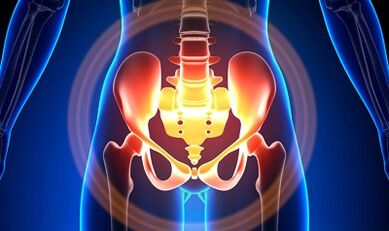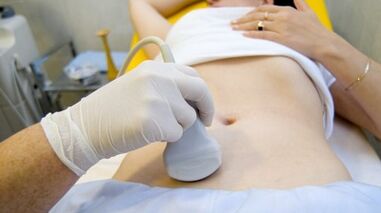
This disease has been poorly studied, although several thousand observed with the next diagnosis and treatment has been described.
Many of the diversity and special diversity of the clinical picture of varicose veins of the pelvic veins lead to raw errors from diagnosis, in the future, it affects the consequences.
Characteristics of venous veins of small pelvis
The veins of the pelvis are much longer than the arteries, determining their large capacity.This is due to the arising of the pelvic blood vessel system.The veins of the pelvis are highly adaptable and can tend to restructure, contributing to the formation of a dense interwoven network.
The speed and direction of blood flow is adjusted by valves, controlled by complex humorous mechanisms.Pressure balance valves at different parts of the vein network.
When the stop valves perform their functions, the stagnation of the blood develops, which leads to the pathology of blood vessels and the formation of varicose veins.The uniqueness of the veins of the small pelvis lies in the wide ligament of the uterus, supporting the heart of the vessel, which can also narrow it, causing a pathology.
Reason
The pathological expansion of pelvic veins may be due to the following reasons:
- Violate blood lines;
- Venous Barrel prison;
- Compressing the mortgage by the changing position of the uterus, for example, in retroflexia;
- Ovarian failure (congenital or obtained);
- Syndrome after being blocked;
- Pathology of connective tissue;
- Angiodisplasia artery;
- Sitting for a long time, heavy labor;
- Varicose veins of the lower limbs;
- Pregnancy (3 or more) and childbirth (2 or more);
- Diseases of chronic female genital area (Salpingoophorite, ovarian tumor, uterine fibroids and endometriosis of the genitals);
- The adhesion process of pelvic organs;
- Obesity.
Classification by the degree of the disease
In terms of expanded intravenous veins, the following levels are distinguished:
- Up to 0.5 cm, the stroke of the bottle blood vessels;
- 0.6-1 cm;
- More than 1 cm.
The options for the disease process
- Varicose veins of the perineum and vestibular money of the vagina;
- Full vein syndrome of the pelvis;
Symptom
- The most common pain - regularly in the lower abdomen, the perineum after the static and dynamic level.The pain enhanced in the second phase of the cycle, after lowering the heat, fatigue, stress, worse than different diseases.
- Feeling is uncomfortable, painful with sex and then.
- Menstrual pain - menstrual disorders, including pain syndrome.
- Set, more than usual, the sugars of the genitals.
- The stagnation of blood leads to infertility, inability, ending pregnancy.
- Violating urinating as a result of expanding the veins of the bladder.
Diagnose
Diagnosis only due to complaint only successfully in 10 % of cases.
The touch of the inner walls of the pelvis, allowing it to feel the long seals and nodules.When tested in the mirror, the purple color of the vagina can be seen.

The selection process is an ultrasonic study with colored doppler mapping, which allows you to identify not only different extensions of the ovarian veins, but also venous thrombosis, post -production obstruction.With ultrasound, visible, worms, structure without signal reflexes, are located on the side surface of the uterus.
The effectiveness of Doppler research is based on the types of colors of Muslims in blue and red, veins and artery blood, respectively.
Ultrasonic testing equipment using a special program recognizes the movement of blood from the sensor and in another direction, calculating blood flow velocity and pulse type.
But the exact definition of the vein is or the artery is still behind the doctor.The Doppler method works in most cases, our bodies point out the exceptions to rules, because blood flow from the heart is not always artery and vice versa.
Therefore, a doctor diagnosed ultrasound to see a artery or vein, its size, blood flow in it and many indicators show that a normal person does not need, but plays an important role in diagnosis.To do this, use the penetration sensor and transfer.
In 5.7% of cases, the disease is accidentally recognized during the screening process.Typically, the diameter of the static ovaric is 0.4 cm.
CT and MRI have great accuracy.Using these methods, you can find the accumulation of varicose veins in the ligament of the uterus, ovaries and around these organs.Can identify simultaneous pathology.
A very reliable method is a phlebographic study.
The contrast is performed at the height of the Valsalva model, against blood flow.This allows you to see valve problems.
Retronenen's endoscopy on the left, phlebography, super phlebovarioscopy and phlebovariography on both sides are also used.These methods allow you to identify blood flow and surgical changes in renal veins and places falling in it are their veins.
The super factory phlebovaropy is made by placing venous catheter through the thigh or auxiliary vein, with the next birth of the contrast.
Most of the blood from the puppet without other horns is thrown away the ovarian veins.But in hypertension conditions, it occurs through uterine veins that are not contaminated into the inner pelvic veins.Puppets of veins, through which the flow may occur, including the Sacral and Plexus of the bladder.
In Phlebo -icigography on the left, 3 stages of intravenous stagnation are distinguished in the clusters of the left ovaries:
- No flow from the puppet of the left ovaries or it is made along a short path.
- There is a long way to add.
- Two additional flow paths or one additional and auxiliary can be seen.
In 2 and 3 stages, the veins of the clusters of the ovaries must be formed.
Endoscopy is used for distinguishing diagnosis.The venous veins are complicated in the pathology in the ovaries, in the direction of the circular and wide ligament.They look like large bacterial corporations with a thin and tense wall.
The complexity of the diagnosis is that the disease is often hidden behind the signs of inflammation, distinguished by clinical manifestations, hidden under endometriosis, proliferation of internal organs, postoperative neuropathy and many body diseases.
Treatment
The main goal of treatment is to eliminate reflux in the vein.In the early stages of the disease, conservation treatment is used.In the final stage of the disease, the selection treatment is surgery.
Conservative treatment

It includes normalization of veins, improving hemodynamic processes and booty processes.
Treatment of symptoms to eliminate personal symptoms.Anti -inflammatory steroids for pain, with bleeding - hemostatic therapy.
The main drugs in conservation treatment are venous and antibiotic.
Phlebotonics - Improve the melody of blood vessels and increase blood flow.With this disease, it is better to consult a gynecologist about some drugs.
An important method is physiotherapy exercises.
Surgical treatment
- Renaissance varicose veins.
- Gonado-Cavalry Shunting.
- Endoscopy.
- Occames of ovarian veins by X -ray method.
Folk remedies
Because the main thing in the occurrence of the disease is the weakness of the valve device, all folk remedies used to expand the veins of the veins of the lower genera are also used for this pathology.
The most commonly used: ordinary hazel, bias, ghost trees, horse chestnuts, dandelion roots, tea mushrooms, willow, oak, St.John's Wort, a series, pollen and many other trees.
The effect is: treated with oak bath, chestnut, willow, chrysanthemum, pharmaceutical, dried herbs, St.John's Wort.
Prevent
- The first thing to do if there is a complaint, prediction or the disease listed above - contact the gynecologist.
- Normalization of working and resting mode, trying not to be in a vertical position for a long time, physical stress.
- Do exercises for pedal prevention
- Compliance with diet: Eat foods with vitamin E, R, C, trying to eat white meat, low in fat, replaced with fruits, vegetables, cereals.
- Drink enough liquid, but not less than 1.5 liters a day.
- Eliminate excess weight, bad habits.
- Consult the doctors participating in wearing compressed linen, it will improve the blood flow from the lower limbs, so there will be less stagnation in the pelvis.
- Avoid bathrooms, sauna, sauna, hot bathroom.
In order not to get sick with such a difficult disease, it is necessary to follow the prevention recommendations listed above.Treating your health is the most valuable in life.
With the smallest suspicious symptoms that you cannot escape for a few days, you should consult your doctor.He must give you a highly qualified help and save you from suffering.

























